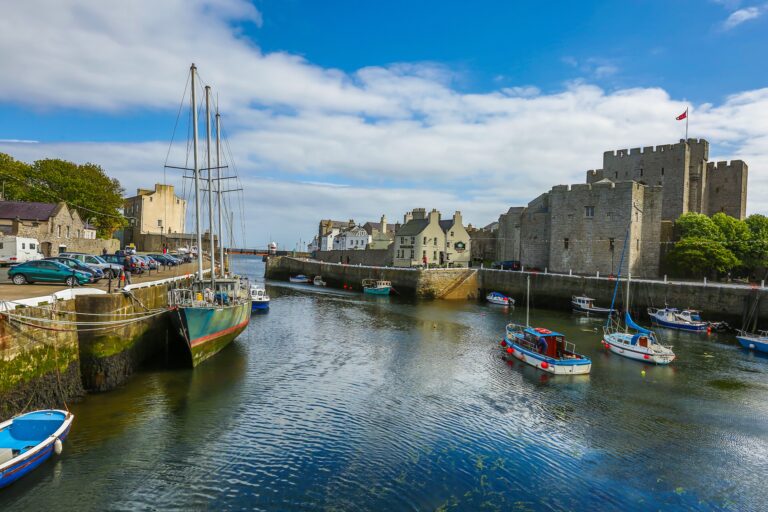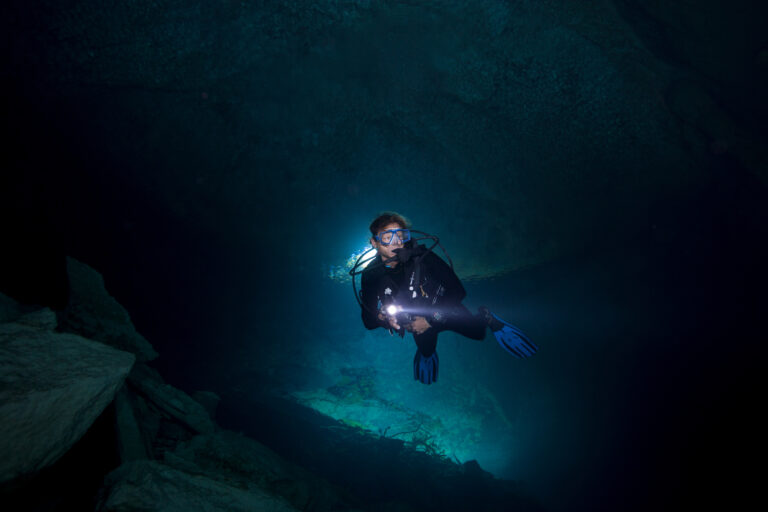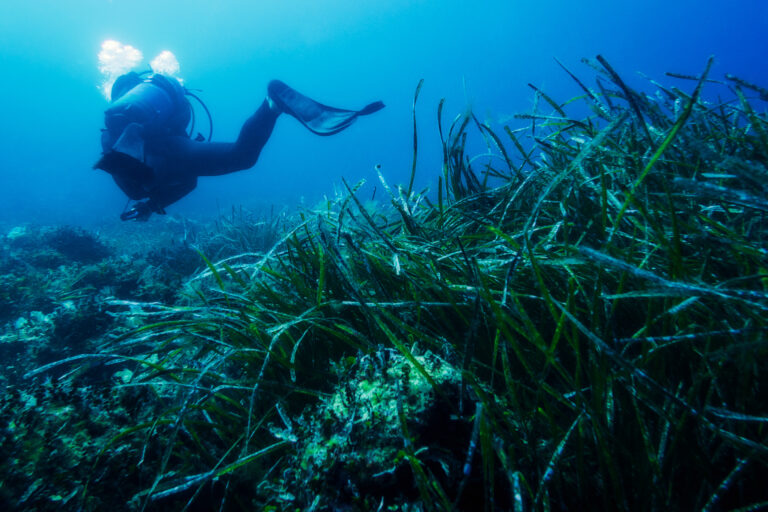Scuba Divers’ Travel Guide to Hawaii
Hawaii, the volcanic archipelago in the central Pacific, is a renowned destination for scuba divers seeking diverse marine life and underwater landscapes. The islands’ clear, warm waters are teeming with colorful coral reefs, tropical fish, and larger marine species such as turtles and dolphins. Hawaii’s diverse dive sites offer something for every level of diver, from beginner-friendly reef dives to advanced sites with lava tubes and underwater caves. The islands’ rich cultural heritage and stunning natural beauty make Hawaii an enticing destination for scuba travelers looking for an extraordinary underwater experience.
Location and Geography
Nestled in the heart of the Pacific Ocean, Hawaii stands as a premier scuba diving destination, offering an unparalleled underwater experience amidst its eight main islands. This tropical paradise, located over 2,000 miles from the nearest continent, boasts a unique geographical setting that contributes to its diverse marine life and extraordinary underwater landscapes. The Hawaiian Islands are the exposed peaks of a great undersea mountain range, formed by volcanic activity millions of years ago. This geological backdrop has created a variety of dive sites, from vibrant coral reefs teeming with colorful fish to dramatic lava formations and deep drop-offs. The clear, warm waters surrounding the islands provide excellent visibility, making Hawaii an ideal location for both novice and experienced divers to explore the rich biodiversity and the mesmerizing beauty lying beneath the Pacific’s surface.
Visa and Entry Requirements
For scuba diving enthusiasts planning a trip to Hawaii, it’s essential to be aware of the visa and entry requirements to ensure a smooth journey to this underwater paradise. As Hawaii is part of the United States, the visa requirements for visitors are the same as entering any other state in the U.S. Travelers from countries that are part of the Visa Waiver Program (VWP) can enter Hawaii without a visa for stays of 90 days or less, provided they have obtained authorization through the Electronic System for Travel Authorization (ESTA) prior to their trip. Visitors from countries not part of the VWP will need to apply for a B-1 or B-2 visitor visa, depending on the purpose of their visit. It’s important to check the latest entry requirements and any COVID-19 related travel advisories or restrictions before planning your trip. Remember, a valid passport is required for all travelers entering Hawaii from outside the United States.
Getting to Hawaii
Getting to Hawaii, a premier scuba diving destination, is a straightforward journey for travelers from around the globe, thanks to its well-connected airports, particularly Honolulu International Airport (HNL) on Oahu, which serves as the main gateway to this tropical paradise. Direct flights are available from numerous international cities as well as from the continental United States, making the islands accessible to divers seeking the underwater wonders of the Pacific. Upon arrival, inter-island flights, as well as boat transfers, offer convenient options for reaching the various islands like Maui, Kauai, and the Big Island, each boasting its own unique diving experiences. Whether you’re flying in from afar or hopping between islands, the journey to Hawaii’s underwater marvels is as seamless as it is exciting, promising an unforgettable scuba diving adventure amidst some of the world’s most vibrant marine ecosystems.
Best Time to Dive
Getting to Hawaii, a premier scuba diving destination, is a straightforward journey for travelers from around the globe, thanks to its well-connected airports, particularly Honolulu International Airport (HNL) on Oahu, which serves as the main gateway to this tropical paradise. Direct flights are available from numerous international cities as well as from the continental United States, making the islands accessible to divers seeking the underwater wonders of the Pacific. Upon arrival, inter-island flights, as well as boat transfers, offer convenient options for reaching the various islands like Maui, Kauai, and the Big Island, each boasting its own unique diving experiences. Whether you’re flying in from afar or hopping between islands, the journey to Hawaii’s underwater marvels is as seamless as it is exciting, promising an unforgettable scuba diving adventure amidst some of the world’s most vibrant marine ecosystems.
Accommodation Options
In the breathtaking archipelago of Hawaii, scuba divers are spoilt for choice with a plethora of accommodation options catering to every taste and budget. From luxurious beachfront resorts that offer dive packages and gear rentals, allowing you to plunge into the underwater world right from your doorstep, to cozy, budget-friendly hostels that are a favorite among solo travelers and backpackers looking to connect with fellow diving enthusiasts. For those seeking a more intimate connection with Hawaii’s stunning natural beauty, eco-lodges and vacation rentals are scattered across the islands, providing a serene retreat after a day of exploring the vibrant coral reefs. Moreover, many accommodations are strategically located near top dive sites and often collaborate with local dive shops to ensure guests have seamless access to boat dives and guided underwater tours, making it effortless to tailor your diving holiday to your personal preferences. Whether you’re here to marvel at the manta rays off the Kona coast or explore the underwater lava formations of Maui, Hawaii’s range of accommodations ensures your stay is as memorable above the water as it is below.
Dive Operators and Dive Shops
In the enchanting archipelago of Hawaii, dive operators and dive shops are your gateway to exploring the underwater marvels that make these islands a diver’s paradise. From the vibrant coral reefs of Maui to the lava tube caverns off the Big Island, Hawaii’s dive shops are staffed by experienced professionals who not only offer gear rentals and sales but also provide a wealth of local diving knowledge. These operators cater to all levels of experience, offering certification courses, guided dive tours, and specialty dives such as night and manta ray dives. Many shops are affiliated with PADI or NAUI, ensuring high standards of safety and instruction. Whether you’re looking to encounter the abundant sea life of Kauai or explore the wreck sites off Oahu, Hawaii’s dive operators are equipped to offer you an unforgettable underwater adventure, emphasizing eco-friendly practices to preserve the islands’ pristine marine ecosystems for future generations.
Transportation within Hawaii
In Hawaii, transportation options for scuba divers are as diverse and accommodating as the islands themselves, ensuring easy access to some of the world’s most breathtaking underwater sites. Upon arrival, most visitors rent cars, which is the most flexible option for reaching the myriad of dive shops and shore dive locations scattered across the islands, particularly on the larger islands like Maui and the Big Island. For those preferring not to drive, Oahu offers excellent public transportation with TheBus, providing routes to popular areas like Hanauma Bay. Inter-island travel is streamlined with frequent flights connecting the main islands, and for the more adventurous, there are also options to charter boats for direct access to dive sites, offering a unique perspective of Hawaii’s stunning coastline. Whether you’re exploring the vibrant coral reefs off Kauai or the famous manta ray night dives near Kona, Hawaii’s transportation network supports an effortless journey into the heart of the Pacific’s underwater paradise.
Currency and Payment Methods
In Hawaii, the official currency is the U.S. dollar (USD), which is the only currency accepted across the islands for transactions. Credit and debit cards, particularly Visa and MasterCard, are widely accepted at most dive shops, resorts, and restaurants, making them convenient for most expenses related to your scuba diving adventure. However, it’s advisable to carry some cash for smaller purchases, tips, or in areas where digital transactions may not be possible. ATMs are readily available in urban areas and near tourist hotspots, but be mindful of potential fees, especially if you’re using an international bank card. For those coming from abroad, it’s recommended to inform your bank of your travel plans to avoid any issues with card usage. While traveler’s checks can be used, their acceptance has diminished, so relying on them is less practical than cards or cash. Always ensure you have a means to secure your money both above and below water, as Hawaii offers a wealth of experiences both on land and in the ocean.
Language and Communication
In the vibrant and diverse scuba diving community of Hawaii, English is the primary language used for communication, both above and below the water. However, the spirit of ‘Aloha’ infuses every interaction, blending the local Hawaiian culture with the universal language of diving. Dive operators and instructors are often multilingual, catering to a global clientele with services available in languages such as Japanese, Chinese, and Spanish, reflecting Hawaii’s status as a crossroads of Pacific cultures. Underwater, divers communicate through a universally recognized set of hand signals, ensuring safety and shared experiences despite linguistic differences. Whether discussing dive plans, identifying marine life, or sharing stories of underwater adventures, the language of diving creates a bond among enthusiasts in Hawaii’s spectacular underwater realms.
Local Culture and Attractions
Hawaii, a scuba diver’s paradise, is not only celebrated for its spectacular underwater realms but also for its rich local culture and myriad attractions that promise an immersive experience. Beyond the breathtaking dives, the islands beckon with their Aloha spirit, a welcoming embrace that extends from the warm, sandy beaches to the vibrant luaus under starlit skies, offering a glimpse into Hawaii’s deep-rooted Polynesian heritage. The islands’ landscapes are dotted with historical landmarks, such as the Iolani Palace and the poignant Pearl Harbor National Memorial, inviting divers to explore Hawaii’s storied past. Nature enthusiasts will revel in the diverse ecosystems, from the lush rainforests and cascading waterfalls of Maui to the volcanic majesty of Hawaii Volcanoes National Park. Whether indulging in the local cuisine, with its unique fusion of flavors, or engaging in traditional crafts and dances, visitors will find that Hawaii’s surface attractions are as compelling as its underwater wonders, making it a destination where every moment ashore enriches the overall adventure.
Cultural Etiquette and Tips
When embarking on a scuba diving adventure in Hawaii, it’s essential to approach the experience with a deep respect for the local culture and environment. Hawaiian culture is rich with traditions and a profound connection to the natural world, including the ocean. As a visitor, always show aloha (respect and love) to the land, sea, and its people. It’s customary to ask for permission before entering the water, a practice rooted in the belief of the presence of guardian spirits. Be mindful of not touching or stepping on the coral reefs, as they are not only sacred to the Hawaiian people but also fragile ecosystems that are vital to marine life. Engage with local dive operators who emphasize conservation and respect for the ocean. Additionally, take the time to learn about the history and significance of the sites you visit; many underwater areas are considered sacred. Lastly, when interacting with locals, a friendly smile and a humble attitude go a long way. Embracing these cultural etiquettes and tips will not only enhance your diving experience in Hawaii but also contribute to the preservation of its unique heritage and natural beauty.
Local Laws and Regulations Relevant to Tourists
In Hawaii, scuba diving enthusiasts must be mindful of local laws and regulations designed to protect the islands’ unique marine ecosystems and ensure the safety of all divers. The state mandates that all divers display a dive flag to signal their presence to boats and other watercraft, helping to prevent accidents. Additionally, Hawaii enforces strict rules regarding interactions with marine life; it is illegal to harass, harm, or feed the wildlife, including the endangered Hawaiian green sea turtles and monk seals. Collecting coral, rocks, or sand from the ocean is also prohibited, as these are considered protected resources. Divers should also be aware of the areas designated as Marine Life Conservation Districts (MLCDs), where regulations may be even more stringent to preserve the biodiversity of these special zones. Compliance with these regulations not only ensures the preservation of Hawaii’s natural beauty but also guarantees a safer and more enjoyable diving experience for everyone.
Safety Tips and Emergency Contacts
When embarking on a scuba diving adventure in Hawaii’s breathtaking underwater realms, prioritizing safety is paramount. Always dive within your certification limits and be mindful of Hawaii’s unique marine conditions, including strong currents and potentially hazardous marine life. It’s crucial to check your equipment thoroughly before each dive and stay hydrated and protected from the sun. In case of an emergency, be aware of the local procedures and contacts. The DAN (Divers Alert Network) Emergency Hotline (+1-919-684-9111) is a vital resource for divers worldwide, offering assistance and advice. Additionally, Hawaii’s Coast Guard can be reached at +1-808-842-2600 for immediate maritime assistance. Familiarize yourself with the nearest hyperbaric chambers, located at the Hilo Medical Center on the Big Island and the Kuakini Medical Center in Honolulu, Oahu. By adhering to these safety tips and having emergency contacts readily available, divers can enjoy Hawaii’s underwater marvels with peace of mind.
Health and Travel Insurance
When planning your scuba diving adventure in Hawaii, it’s crucial to consider health and travel insurance that specifically covers scuba diving activities. Hawaii’s breathtaking underwater landscapes, teeming with vibrant marine life and unique dive sites like the Molokini Crater and the Cathedrals of Lanai, make it a top destination for divers. However, diving, like any adventure sport, carries inherent risks, and the remote locations of some of the best dive spots can complicate access to medical facilities in case of an emergency. Ensure your insurance policy includes coverage for scuba diving-related incidents, hyperbaric treatment, and medical evacuation. This will not only provide peace of mind but also safeguard against unforeseen medical expenses, allowing you to fully immerse yourself in the awe-inspiring beauty of Hawaii’s underwater world. Always verify that your insurance is valid for the depth you plan to dive, as some policies have depth limitations.

















